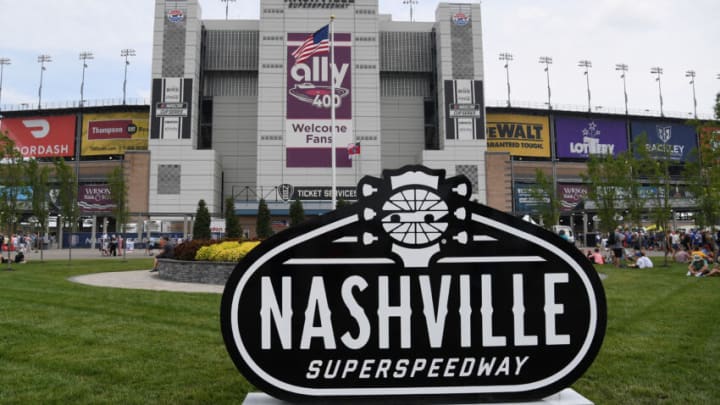The 2023 NASCAR Cup Series schedule features minimal changes from 2022, which could be a sign that the sanctioning body has found its ideal calendar.
The 2023 NASCAR Cup Series schedule features something that we haven’t seen in three years – minimal change from the previous season.
The schedule, which was released last week, has just seven race numbers with different tracks than in 2022. The remaining race numbers are identical to this season, including the entire playoff calendar.
In fact, this is the most comparable that the schedule has been from year to year since 2019, which had the exact same lineup as 2018.
For 2023, six of the changes involve minor swaps, including the Bristol Motor Speedway dirt race moving up a spot to remain on Easter Sunday and the Darlington Raceway spring event being pushed down a spot to remain on Mother’s Day.
The only major change is the addition of a street race in Chicago, Illinois on Independence Day weekend, which replaces Elkhart Lake, Wisconsin’s Road America.
That’s an obvious switch between locations in relatively close proximity, and with a similar type of track, to allow for what could become a marquee event, the NASCAR Cup Series’ first-ever street race in the heart of a big city.
There will be one similarity and one change for the exhibition races. Another preseason event is scheduled to take place at Los Angeles Memorial Coliseum while the All-Star Race is set to bring the Cup Series back to North Wilkesboro Speedway for the first time since 1996.
Since the 2023 NASCAR Cup Series schedule features many similarities to 2022, does it mean that the series has found its ideal mix of tracks?
For years, NASCAR fans have been asking for something different than the status quo. The schedule had become more predictable and included more races at intermediate tracks, which were seen by some as featuring less action than the short tracks, road courses, and superspeedways.
The status quo was made easier by five-year track sanction agreements that ensured limited to no changes in the venues over a lengthy period of time. But with agreements set to expire at the end of 2020, the sanctioning body decided that it was time for a change.
“Do we want to listen to what the fans have to say? We absolutely do,” said NASCAR president Steve Phelps, as quoted by RACER, in 2019. “Are the fans speaking loudly about their interest in seeing more short tracks and more road courses? Yes.”
The sanctioning body made several changes to the placement of races for 2020 before the schedule was changed much more dramatically due to the start of the novel coronavirus pandemic and the resulting hiatus.
Major changes continued for 2021, with the number of road course races being increased to seven from two in 2019. There were also three fewer races on speedways two miles and larger, plus the addition of the first dirt race in decades at an altered Bristol Motor Speedway.
The breakdown of track types remained largely the same for 2022, but with changes to a hefty 23 spots on the schedule from 2021, including the addition of a race at World Wide Technology Raceway near St. Louis, Missouri.
While there are more road courses, unique events, and different race dates than a few years ago, the schedule has still fallen short of taking away intermediate tracks.
NASCAR did what fans had been asking them to do for many years by making wholesale schedule changes, but that hasn’t taken away the big-track nature of the series.
There are 17 races at tracks between one and two miles in length on the 2023 schedule, which is the same amount as 2019. Meanwhile, there are only six short track races (including the dirt race), which is also the same.
The conversion of Auto Club Speedway from its current two-mile configuration, which is set to be used for the final time next year, to a short track will help for future years. The exhibition races in Los Angeles and North Wilkesboro could also help give fans an extra short track fix.
Despite the large number of large tracks, the new Gen 7 car has actually helped make the schedule feel more revamped than the breakdown shows. The car has helped keep things interesting everywhere, as evident by the parity this season.
With a dirt race, a street course race, more road courses races, and racier intermediate tracks, plus a mix of traditional venues and stops in new urban markets, NASCAR appears to have found its ideal schedule.
But that doesn’t mean it should become status quo once again.
In an age of increased competition for shorter attention spans, change is necessary to prevent fans from getting bored. All big-league sports change their schedule from year to year – you won’t see the same NFL matchups on week one, two, and three every season.
NASCAR has its traditions, such as the season-opening Daytona 500, but there’s no reason why the order of non-traditional and playoff races shouldn’t be changed to keep things fresh. It would also allow local fans to enjoy racing at different times of the year, including bringing playoff action to new markets.
While NASCAR seems to have found a great mix of tracks, it should look to change more than seven spots on its calendar from year to year for future seasons.
